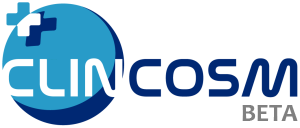Morphine Consumption in the Obese Patients
Study Details
Study Description
Brief Summary
The goal of this observational study is to evaluate the quality of postoperative analgesia in a group of obese patients schedule to bariatric surgery under TIVA Opiod-free after to receive lidocaine and ketamine perfusion. The main question it aims to answer are: How lidocaine and ketamine perfusion during recovery period does impact over morphine consumption on the following 48 hours after surgery? All participants will receive total intravenous anesthesia and, at the end of the surgery, they will be divided in two groups, group A: placebo and, group B: with postoperative lidocaine and ketamine perfusion. Our hypothesis is ketamine and lidocaine are a good alternative to decrease the use of morphine in obese patients.
| Condition or Disease | Intervention/Treatment | Phase |
|---|---|---|
|
Detailed Description
The obese patients have more risk for certain side effects and complications with elevated risk of perioperative mortality and morbidity. An effective postoperative pain management is important to prevent pulmonary complications and, it is not recommended continuous infusions of opioids in this kind of patients, because the opioid-induced upper airway obstruction and respiratory depression are more likely to be seen in obese patients with obstructive sleep apnea. We can reduce perioperative opioid using dexmedetomidine, ketamine and lidocaine, however, it is a little know the use and benefits of lidocaine and ketamine inmediately after surgery.
Study Design
Arms and Interventions
| Arm | Intervention/Treatment |
|---|---|
| Group A: General anestesia will be performed with TIVA. All patients will be premedicated with midazolam 0,02-0,03 mg/kg. Anesthesia induction will be performed with fentanyl 2-3 mcg/ml, propofol TCI (Schider model) target 3 mcg/ml, dexmedetomidine 1 mcg/kg/hora, lidocaine 1,5 m/kg, ketamine 0,3 mg/kg, magnesium sulphate 20 mg/kg, rocuronio 1 mg/kg. Anesthesia will be maintained with propofol TCI (Schnider Model), dexmedetomidine 0,5 a 1 mcg/kg/h, ketamine 0,3 mg/kg/h, lidocaine 2 mg/kg/h. Multimodal analgesia will be performed with paracetamol 1 gr, dexketoprofen and metamizol. Sugammadex will be used to reverse the neuromuscular blocking agent. |
Drug: Post-operative analgesia without lidocaine and ketamine
At the end of surgery, they will continue receiving analgesia according the schedule.
|
| Group B: General anestesia will be performed with TIVA. All patients will be premedicated with midazolam 0,02-0,03 mg/kg. Anesthesia induction will be performed with fentanyl 2-3 mcg/ml, propofol TCI (Schider model) target 3 mcg/ml, dexmedetomidine 1 mcg/kg/hora, lidocaine 1,5 m/kg, ketamine 0,3 mg/kg, magnesium sulphate 20 mg/kg, rocuronio 1 mg/kg. Anesthesia will be maintained with propofol TCI (Schnider Model), dexmedetomidine 0,5 a 1 mcg/kg/h, ketamine 0,3 mg/kg/h, lidocaine 2 mg/kg/h. Multimodal analgesia will be performed with paracetamol 1 gr, dexketoprofen and metamizol. Sugammadex will be used to reverse the neuromuscular blocking agent. |
Drug: Post-operative lidocaine and ketamine perfusion.
At the end of surgery, they will continue receiving analgesia according the schedule and, addicionally, lidocaine (1 mg/kg/h) and Ketamine (0,15 mg/kg/h) for 90 minute as part of postoperative analgesia.
|
Outcome Measures
Primary Outcome Measures
- Postoperative morphine consumption: the change is being assessed. [Change is being assessed for 48 hour]
Quality of analgesia according to morphine consumption at 2 , 4 ,24 and 48 hour
Eligibility Criteria
Criteria
Inclusion Criteria:
-
All patients between 18 y 65 years old.
-
IMC > 30 kg/m2
Exclusion Criteria:
-
Patients' refusal to participate in clinical research.
-
Patients taking high doses of opioids before operation for chronic pain
-
Patients with allergies to any study medication.
-
Pregnancy or breastfeeding.
Contacts and Locations
Locations
| Site | City | State | Country | Postal Code | |
|---|---|---|---|---|---|
| 1 | Carolina | Barcelona | Spain | 08022 |
Sponsors and Collaborators
- Tiva Group
Investigators
- Principal Investigator: Carolina Frederico, Tivagrooup
- Principal Investigator: Gregory Contreras-Pérez, Tiva Group
Study Documents (Full-Text)
None provided.More Information
Publications
None provided.- TIVA OFA Obese patients
